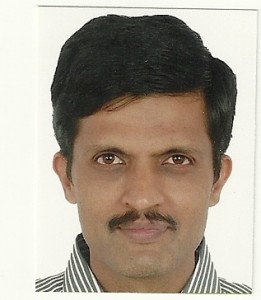There are increasing signs of breakthroughs that could provide disproportionate returns to Tata companies.
One question that I am asked frequently by companies that have launched innovation programmes is: “How do we sustain interest and commitment from employees across the company?” In other words, how do we keep up the momentum?
After attending the final presentations and awards ceremony of Tata Innovista 2015 recently, I realized the Tata group has found an answer.
This year, Tata Innovista, a “celebration of creation and innovation within the group”, had more than 2,700 teams participating from 65 companies across 18 countries. Thirty thousand people have participated in Innovista since it was started a decade ago. I don’t know where to look for comparative statistics, but it’s reasonable to assume that this is one of the largest corporate innovation events in the world.
Innovista is just one of the initiatives of the Tata Group Innovation Forum (TGIF), a group of CXOs across the Tata group that evangelizes innovation. Innoverse, another TGIF initiative, is a crowd-sourcing platform; 16 Tata companies are active participants; 685 problems were posted last year resulting in 45,000 ideas, 513,000 conversations and 2,400 ideas taken forward.
While the TGIF itself meets as per a calendar, it has a team working behind the scenes to keep up the momentum of these initiatives. This team is housed in group-wide Centres of Excellence like Tata Quality Management Services and Tata Management Training Centre.
Ratan Tata provided the initial impetus for all these initiatives. He set an example for the group through his close involvement with the development of the Nano, and other innovations like the Tata Swach and Ginger hotels. But his lasting influence may well be the creation of the TGIF under the leadership of Tata Sons Director R. Gopalakrishnan with the mandate of building an innovation culture in the group.
With Ratan Tata’s support in the background, Gopal has been the force behind TGIF. At this year’s Innovista, he was felicitated on the completion of 10 years of TGIF. In Gopal, we have the answer to the question I raised at the outset—a committed executive sponsor with an effective corporate support structure can make all the difference.
Gopal’s Takeaways
Gopal, who has passionately backed innovation activities over the last decade, had some interesting takeaways to share.
 The first was to revel in stories, as these are the best ways to share the hope and meaning of human progress. I couldn’t agree more. This is why, inspired by the Heath brothers Chip and Dan, Vinay Dabholkar and I centred our book 8 Steps to Innovation: Going from Jugaad to Excellence (HarperCollins, 2013) around stories. Stories, and even myths at times, play a crucial role in overcoming the fear of failure, one of the biggest obstacles to innovation. One of the world’s most innovative companies, 3M, does this wonderfully well when it encourages storytelling about the hundreds of inventors within the company who went on to succeed at last in spite of failing many times on the way.
The first was to revel in stories, as these are the best ways to share the hope and meaning of human progress. I couldn’t agree more. This is why, inspired by the Heath brothers Chip and Dan, Vinay Dabholkar and I centred our book 8 Steps to Innovation: Going from Jugaad to Excellence (HarperCollins, 2013) around stories. Stories, and even myths at times, play a crucial role in overcoming the fear of failure, one of the biggest obstacles to innovation. One of the world’s most innovative companies, 3M, does this wonderfully well when it encourages storytelling about the hundreds of inventors within the company who went on to succeed at last in spite of failing many times on the way.
Revel in stories, as these are the best ways to share the hope and meaning of human progress.
The second was to focus on the innovation and not the innovator. Gopal gave the example of Tim Berners-Lee, considered one of the fathers of the World Wide Web (WWW), who has steadfastly refused to hog credit for the WWW, always insisting that many different people played a role. If Gopal was trying to point out that very few innovations are the outcome of a single person’s effort, it’s difficult to disagree with him. But, stories usually centre around individuals and not teams, so I wonder how to reconcile this insight with the first one.
Focus on the innovation and not the innovator
Gopal’s third point was that an idea is no innovation. In fact, according to Gopal, it is the struggle to nurture and deliver the idea that is innovation. This point again has strong resonance with what we have seen—the road to developing an idea, seeing whether it works, refining it, combining it with others, making the process as robust as possible and finally delivering value or benefit is at the heart of innovation. This is an important lesson for youngsters, in particular, who tend to find the creative process of ideation far more exciting than the rocky road to execution.
It is the struggle to nurture and deliver the idea that is innovation.
“Rely on the compass, not on the map” was Gopal’s final point. If you think about this carefully, you’ll see it’s quite profound. Innovation tends to be an evolutionary process, with many twists and turns. Traversing existing roads will result only in incremental change. Bigger impact will need trying out the road not taken, but you have to get the directionality right. This last point is particularly salient because, in the corporate context, an innovation that lacks alignment with corporate strategy is unlikely to reach fruition. This lesson seems to have been absorbed well in the Tata companies—I found a close fit between innovation and strategy in most of the innovations I saw.
Rely on the compass, not on the map
What’s Next?
Ever since open source software became successful, the social “bazaar” has emerged as an alternative to the corporate “cathedral” as far as innovation is concerned. Coupled with the explosion of information, and the wide dispersion of creative efforts across the globe, this has induced companies to open up their innovation processes. Some Tata companies have embraced this idea with Tata Consultancy Services (TCS), for example, having pursued the concept of a Co-Innovation Network (COIN). Tata Innoverse that I mentioned earlier already provides one possible platform for collaboration between group companies.
But, the strength of a group like the Tatas lies in the diversity of competencies and markets that it encompasses. Foreigners who visit India are struck by this even if we take it for granted. Some past Tata innovations—most notably the Tata Swach water filter—have demonstrated the power of such collaboration.
A big challenge is how to encourage collaboration between independently managed companies with their own stakeholder groups. Tata Chairman Cyrus Mistry referred to the importance of such collaboration in his concluding remarks. But my own sense is that the key to unleashing the next wave of innovation in the Tata group may lie in fostering such collaboration not only with other group companies but with the wider world.
Tata companies are on the cusp of a major jump in innovation. Earlier, “invisible” innovations in processes resulting in efficiency improvements were the mainstay of innovation. But there are increasing signs of technological breakthroughs that could provide disproportionate returns to Tata companies. Two big acquisitions that Ratan Tata made—Corus (now Tata Steel Europe) and Jaguar Land Rover—already possess the capability for such technological innovation. If they can be harnessed as role models and mentors, the Tatas may well be able to set benchmarks for technological innovation just as they did for employee welfare a hundred years ago.
This article was written for FoundingFuel.





